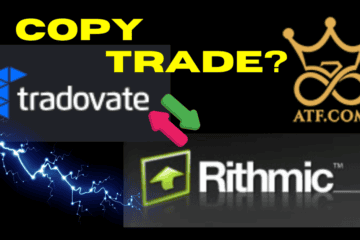Prop firms have become huge in the trading industry, and there’s plenty of reason to be happy about it if you’re an aspiring trader that doesn’t have capital or don’t want to allocate money to trading while you pursue other endeavors. So, what are the risks of prop traders and prop trading risks that people may face in the future?
Types of Prop Trading Risks
Prop trading risks include a range of concerns, but before we dive into the risks, let’s remind ourselves that the alternative is the situation that was before prop firms gave us access, which was you had to save up your own money before you could benefit from your skills as a trader.
Prop Trading Risks include:
The prop firm closes down or goes bankrupt.
The prop firm denies your payouts.
Regulators shut down or alter the prop firm requirements.
Platforms ban the prop firm.
Bad liquidity providers and high slippage.
You don’t make the targets or you breach the account rules.
Risks of Prop Traders in Terms of What The Trader Can Control?
The ultimately trader controls what they buy, decide on, trade and risk.
This means that the trader should understand their ability to trade and probable outcomes such as targets, max drawdown and max daily drawdown.
The trader must also understand the other rules such as timing of trades, holding overnight, use of Expert Advisors or Algos, leverage requirements and so on.
It is critical to understand the rules of the prop firm before buying, assessing its validity in line with your trading strategy and results history.
Regulatory Risk for Prop Traders
Like when USA banned MetaTrader and CFD based prop firms were no longer able to harbor USA clients, this type of situation could occur with other asset classes, locations, account types and so on.
Other regulatory changes that could come out may include something that blocks people under a certain net worth, experience or background from accessing prop funds. While it seems silly to do that and take away the freedom of someone that can achieve certain results in the markets, it wouldn’t be all that surprising if the higher ups felt it was giving too much opportunity to people.
While those regulations focus on the trader’s access, there could also be other regulations where regulators ban prop firms from operating. This one seems the most likely for a few reasons which will be discussed later.
The Issue with Prop Firms in Their Current State
Since prop firms collect money as payment for a service, it means they are not ‘deposit taking’ or holding client funds. This means they are able to elude many regulations and requirements that a regular broker would have to adhere to.
This means they take money, and if the trader passes they pay based on however they are managing their backend. Whether they copy the trades, inverse most of them or simply pay directly from subscription payments, it is unknown and currently not illegal to use any of these methods, partly because the ‘prop funds’ are theirs to use and operate a business.
Next is the concept that cause the 30 day pass period to be eradicated from prop challenges. This was seen by many as a form of gambling rather than true trading, which is right. This was a great move, however there are still many regulatory changes that probably need to happen in order to make prop firms more realistic for traders to pass, even if they are some of the best traders in the world!
Risk of a Prop Firm Closing Down
There are many reasons a prop firm may not be able to continue operating outside of the basis of regulation. One is due to platform access such as the MetaTrader situation, the other is due to financial health.
If a prop firm doesn’t manage their risks properly, they could fall into hot water fast. Let’s say they don’t hedge any traders and someone earns a huge payout, the prop firm may not be able to cover the costs and continue operating.
On the other hand, if they copied all trades directly to the market they may find that traders perform poorly and lose money (which is traditionally the expectation that retail traders will lose money 70 – 90% of the time). The prop firm would need to ensure their fees cover losses like this, and also have the stops in place without attracting too much slippage. Taking too many prop trader losses would be dire for a prop firm.
Choosing a Prop Firm
There are tons of prop firms out there now, with new ones seemingly showing up by the day. Choosing a prop firm becomes more difficult if you’re already fully stacked with the bigs ones like FTMO, Apex Trader Funding or TradeDay.
Let’s take a quick look at the things to look for in a prop firm.
Check Prop Firm Payout Proof
Payout proof is a big one, at the end of completing their challenge and jumping through the hoops to get paid, you want to actually get paid. As an example, FTMO has tons of payout proof and Global Finance Trading confirms they do pay.
Not only checking they do pay, but do they throw in any silly rules that aren’t easily shown in their documentation. One example of this comes to mind is Fidelcrest. Fidelcrest offer bigger accounts but seem to make rules up after you pass to ensure you don’t get a shot at earning anything from them.
When running your payout proof due diligence, make sure you check the reasons people miss out on getting paid. If they are being unreasonable and often abusive/swearing (this happens a lot) then take it with a grain of salt as they often don’t understand how things work. But if they offer legitimate reasons they are truly unfair, this is a red flag.
Funded Engineer had slippage of over 100 pips greater than when compared to other brokers and prop firms. A few months later they went under, probably because they had lost huge credibility in the marketplace. Not only is it a risk they may not pay out, but also a risk that they could lose the business as a result.
Check Their Rules Suit Your Trading Style
Once you feel they are likely to pay out if you fulfill their requirements, it’s time to check if the rules are suitable for your needs as a trader.
If you are a swing trader holding trades overnight, a prop firm that only allows day trading (where trades must be closed by end of day), probably wouldn’t be a good idea.
When it comes to your trading style, you should know how long you like to hold trades for, the risk you hold across all trades at any one time, the daily drawdowns and the leverage you require to take positions and earn an anticipated result.
Mapping your own trading outcomes to a prop firm is a critical element of choosing who to go with if their rules suit your trading methods.
Check the Costs are Worth it
The final step is to check that the costs are worth it. Let’s say you feel confident you’ll get paid AND the rules fit your trading style so that you are likely to pass based on your trading history and statistics. If the costs are too high, it makes it not worth the risk, so now it is time to check the costs and account types to go for.
Choosing which prop firm account type is about understanding your probability of passing that challenge or evaluation along with the price tag attached to the account.
Some prop firms offer instant funding, but it might cost 10% of the total capital to access it and you still have to respect the drawdown rules once funded.
Other prop firms may offer a single phase challenge which may have tougher drawdown limits than a 2 phase account.
Finally, there’s the 2 phase account evaluation, which generally comprises of 2 evaluations, with the first evaluation generally being about double the target of the second evaluation.


0 Comments